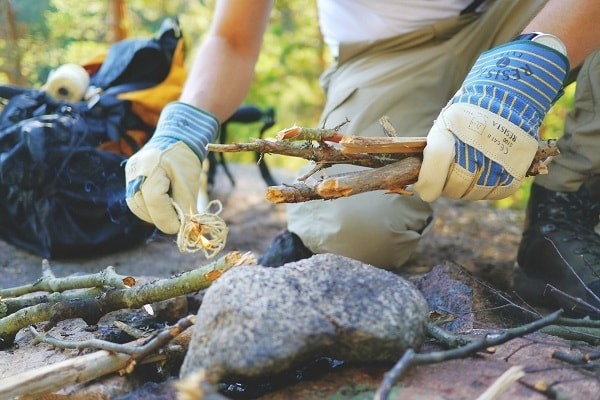Since 1990, fires have burned an average of 2.4 million hectares of forest in Canada each year. But according to a 2017 Natural Resources Canada report, “the frequency and size of fires are expected to rise with climate change, as unseasonable and extreme weather becomes more common and the frequency of lightning-caused fires increases.”
Each year, fires not only leave everlasting marks on the Canadian landscape, but they can also have huge economic impacts.
The Government of Canada’s Canadian Wildland Fire Information System is a fire management information system that monitors fire danger conditions across Canada 24 hours a day, 7 days a week. It includes an interactive fire map and up-to-date reports on the fire situation across Canada.

Where to build a fire
- Choose a spot near the water that is sheltered from the wind and at least three metres away from trees and branches.
- Clear away all flammable materials within a one-metre radius.
- Dig a hole down to the mineral soil (sand).
- Place rocks around the area.
Keep an eye on it!
- Make a fire that is no more than one metre high.
- Keep a constant watch and do not leave the area.
- Have hand tools (shovel, rake, bucket) nearby to put out sparks.
How to put out a fire properly
- Douse it with water not just once but twice, and stir the ashes to help the water soak in.
- Look for embers hiding between the rocks.
- Wait several minutes and do a final check before leaving.

